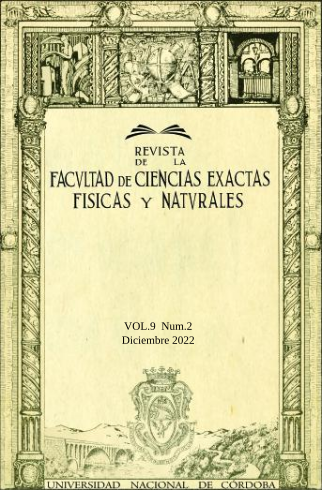WNOCs-LNA Development Feasibility. A study using free software tools and predictive models.
Keywords:
WirelessAbstract
Wireless networks on chips allow solving, among others, the problems associated with the use of wired buses. Current works show that they are also very suitable to achieve characteristics such as performance, reliability and graceful degradation scalability. This work demonstrates the development feasibility of one of the required radio frequency modules, using free tools and models. In particular it is shown that it is possible to meet a set of basic requirements for a wireless network on chip low noise amplifier . It is also shown that the freely available predictive models, allow to extend the operating frequencies and anticipate even more demanding future requirements. As a consequence, these wireless micro networks are emerging as a fundamental building block in the development of future critical systems, such as segmented architectures, driver-less vehicles and autonomous bio-medical equipment.
Downloads
References
[1] Asharani, M. and Nagabhushan, M. (2018). “A 2.4ghz algorithmic design of cmos lna in 180nm technology”. pages 2579–2582.
[2] Barnell, M., Raymond, C., Capraro, C., Isereau, D., Cicotta, C., and Stokes, N. (2018). “High-performance computing (hpc) and machine learning demonstrated in flight using agile condor®”. In: 2018 IEEE
High Performance extreme Computing Conference (HPEC). pages 1–4.
[3] Bryant, R. E. and O’Hallaron, D. R. (2016). Computer Systems: A Programmers Perspective, Third Edition. Pearson, Madrid.
[4] efabless (2021a). “Mpw program”. Tomado de https://efabless. com/ (14/02/2022).
[5] efabless (2021b). “Mpw program”. Tomado de https://efabless. com/open_shuttle_program (14/04/2022).
[6] Lee, T. (2003). The Design of CMOS Radio-Frequency Integrated Circuits, Second Edition. Cambridge university press, .
[7] Martinez-Perez, A. D., Martinez-Martinez, P. A., Royo, G., Aznar, F., and Celma, S. (2020). “A new approach to the design of cmos inductorless common-gate low-noise amplifiers”. pages 1–4.
[8] Martínez-Pérez, A. D., Gimeno, C., Flandre, D., Aznar, F., Royo, G., and Sánchez-Azqueta, C. (2019). “Methodology for performance optimization in noise- and distortion-canceling lna”. pages 45–48.
[9] Matolak, D., Kodi, A., Kaya, S., Ditomaso, D., Laha, S., and Rayes, W. (2012). “Wireless networks-on-chips: architecture, wireless channel, and devices”. IEEE Wireless Communications, 19(5):58–65.
[10] Nengzhi, J., Jianwu, Z., Haili, X., Xiaoning, W., and Yulin, S. (2020). “Comparative research on high-speed networks of high performance computing cluster based on mpigraph”. In: 2020 IEEE 6th International Conference on Computer and Communications (ICCC). pages 579–583.
[11] NXP (2013). “Practical considerations for low noise amplifier design”. Tomado de https://www.nxp.com/docs/en/white-paper/RFLNAWP.pdf (13/06/2020).
[12] Pasricha, S. and Dutt, N. (2008). On-Chip Communication Architectures: System on Chip Interconnect: Volume. Morgan Kaufmann, .
[13] Poovendran, R., Billclinton., S., Darshan., R., Dinakar., R., and Fazil., M. (2019). “Design and analysis of a mesh-based adaptive wireless network-on chips architecture with irregular network routing”. In: 2019 IEEE International Conference on System, Computation, Automation and Networking (ICSCAN). pages 1–6.
[14] Skywater (2021). “Skywater”. Tomado de https : / / www .skywatertechnology.com/ (14/02/2022).
[15] Wang, Z., Feng, J., Xu, J., Chen, X., Zhang, J., Chen, S., and Liu, Y. (2021). “Hero: Pbit high-radix optical switch based on integrated silicon photonics for data center”. IEEE Transactions on Computer Aided Design of Integrated Circuits and Systems, pages 1–1.
[16] Wikipedia (2021). “Optical interconnect”. Tomado de https://en.wikipedia.org/wiki/Optical_interconnect (07/02/2021).
[17] Zhang, W., Hou, L., Zuo, L., Peng, Z., and Wu, W. (2010). “A network on chip architecture and performance evaluation”. In: 2010 Second International Conference on Networks Security, Wireless Communications and Trusted Computing, volume 1. pages 370–373.
[18] Zhao, D., Wang, Y., Wu, H., and T.Kikkawa (2015). “I(Re)2-WiNoC: Exploring scalable wireless on-chip micronetworks for heterogeneous embedded many-core SoCs”. Digital Communications and Networks, 1(1):45–56.
Downloads
Published
Issue
Section
License
Copyright (c) 2022 Facultad de Ciencias Exactas, Físicas y Naturales (Universidad Nacional de Córdoba)

This work is licensed under a Creative Commons Attribution 4.0 International License.
Any exploitation of the work is permitted, including exploitation for commercial purposes and the creation of derivative works, the distribution of which is also permitted without restriction.



